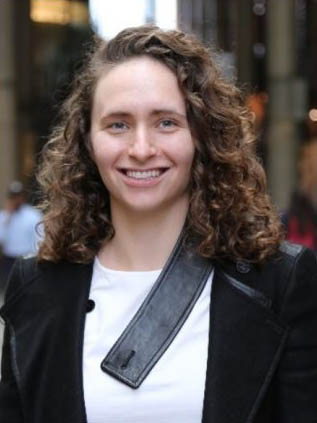
Work is underway in Professor Shoshanna Saxe’s (CivMin) lab to create the world’s largest detailed database of construction materials used in buildings and transport infrastructure.
“Materials are the biggest driver of cost and environmental impact on a construction project,” explains Saxe, whose work investigates ways to align infrastructure provision with sustainability. “But we tend to do a pretty weak job of both understanding what materials we use, and of designing infrastructure projects to increase efficiency.”
Saxe’s team hopes to use the database to find policy and sustainable design opportunities for future projects at a range of scales, from an individual building to a whole neighbourhood, or even an entire city.
“Thoughtful design would make a big impact towards reducing material use, and in becoming better caretakers of both our natural and built worlds,” adds Saxe, who is among five U of T Engineering researchers to be awarded Canada Research Chairs (CRC) today.
Established in 2000, the federal program invests in recruiting and retaining top minds in Canada. It supports research in engineering, natural sciences, health sciences, humanities and social sciences. U of T’s total allotment of research chairs in the CRC program is the largest in the country.
As the new Canada Research Chair in Sustainable Infrastructure, Saxe says the title enables her to accelerate the database project.
“It has allowed me to build out a team of great researchers from the undergraduate, postgraduate and postdoctoral level — all working together towards a shared vision of a more sustainably built environment,” she says, “It will also, I hope, attract more people to work with us.”
Professor Ali Hooshyar (ECE)’s research also focuses on finding sustainable solutions — his work investigates renewable energy systems and smart grids.
Power generation has been consistently ranked as the largest driver of global greenhouse gas emissions. A major obstacle in reducing its environmental impact is remedying the key differences between wind/solar energy and conventional power plants.
“These differences can render the control and protection devices of power grids ineffective, and so they have led to major disturbances and outages in the past few years,” says Hooshyar. “This undermines the future viability of power grids using renewable energy — unless a complete overhaul of control and protection devices are carried out.”
Hooshyar’s team is developing the next generation of control and protection devices to ensure compatibility with green energy systems. And as the new Canada Research Chair in Electrical and Electronic Engineering, Hooshyar says his title will help raise awareness beyond the power system protection community about the operational challenges of integrating renewable energy sources.
“It will also facilitate recognition of our research group within industry,” adds Hooshyar. “And the financial resources of the CRC program will help to attract gifted researchers to our group.”
The five U of T Engineering researchers to have new or renewed Canada Research Chairs are:
- Birsen Donmez (MIE), Canada Research Chair in Human Factors and Transportation (renewed)
- Ali Hooshyar (ECE), Canada Research Chair in Electrical and Electronic Engineering (new)
- David Lie (ECE), Canada Research Chair in Secure and Reliable Systems (new)
- Radhakrishnan Mahadevan (ChemE), Canada Research Chair in Metabolic Systems Engineering (new)
- Shoshanna Saxe (CivMin), Canada Research Chair in Sustainable Infrastructure (new)
“The Canada Research Chair program opens up opportunities for innovation and industry collaboration, making it possible for our researchers to improve the lives of Canadians, and beyond, in areas such as sustainability and data privacy,” says Ramin Farnood, Vice-Dean, Research at U of T Engineering. “I congratulate our new and renewed CRCs.”
By Liz Do
This story originally posted on Engineering News